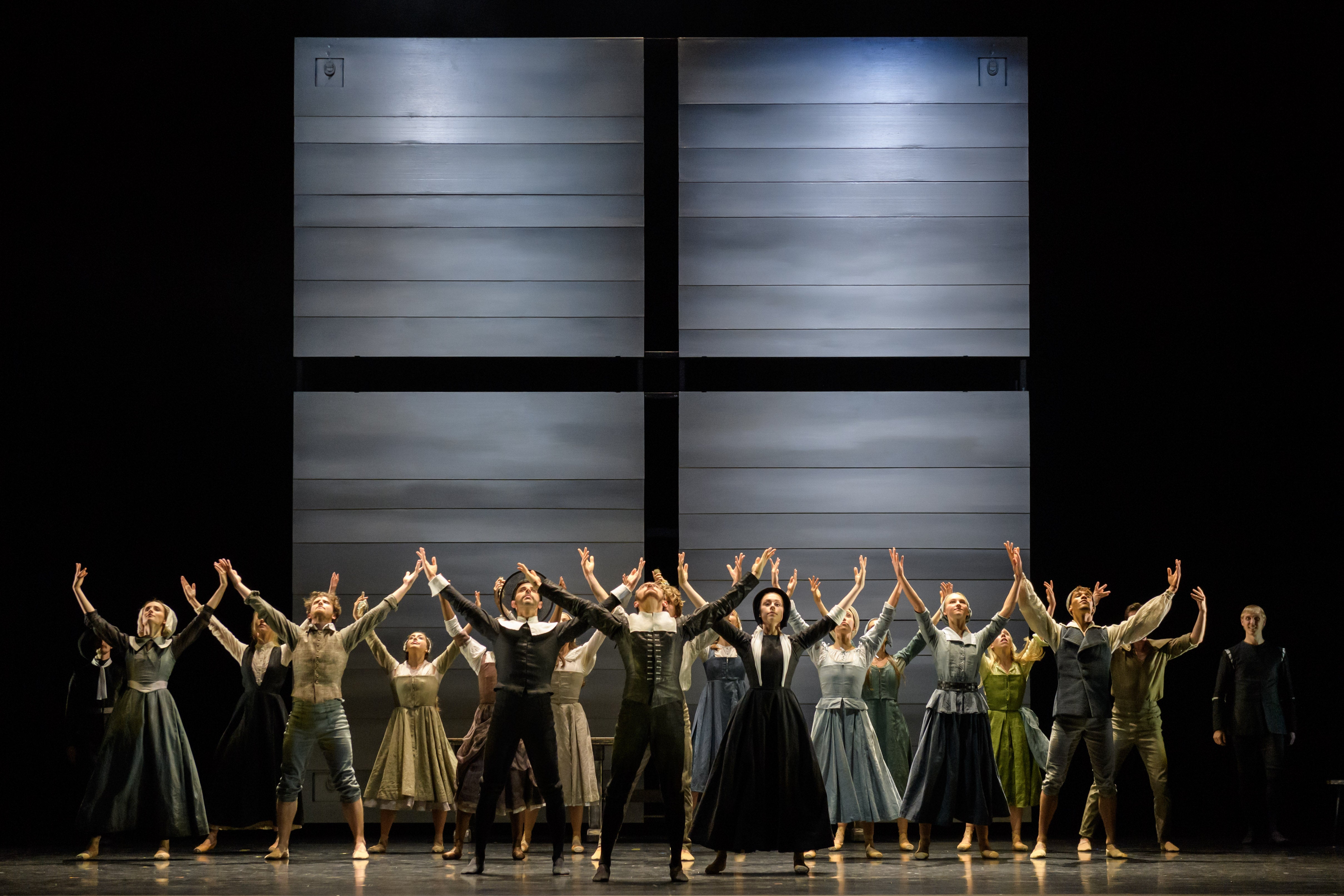The Crucible review, Sadler’s Wells: Scottish Ballet’s Arthur Miller adaptation is fierce and stark
Helen Pickett’s production is an evening of unbroken intensity

Scottish Ballet’s The Crucible is fierce and stark, with storytelling as taut as a stretched bowstring. Choreographer Helen Pickett shapes Arthur Miller’s play about the Salem witch trials into a tight-danced narrative. From the spooky freedom of children’s games to the repressed panic of the courtroom, it’s an evening of unbroken intensity.
Pickett and her team create a spare onstage world. The set and lighting by Emma Kingsbury and David Finn create straight lines for church and courtroom, defining spaces that are both empty and claustrophobic. The forest is even barer, a contrast because those rigid boundaries aren’t there. When the girls of the village play with shadow puppets, they show both a scary wolf and stolen kisses.
The score, by the marvellously named Peter Salem, blends orchestral and electronic sound with snatches of voices. There are snatches of song, and of whispered threats – but when the real accusations come, they’re wordless screams.
Where the play’s characters are haunted by a back story, Pickett puts it directly on stage; ballet lives in the present tense. So we see John Proctor’s affair with the maid Abigail, and his wife Elizabeth’s jealousy. Kingbury’s stylised period costumes let the dancers move, but suggest the decorum these characters try to maintain. When the affair is discussed in court, Abigail and John are tugged into poses from their earlier duet. We can see what’s being argued, while they are literally manipulated.
Throughout, Scottish Ballet’s fine dancers are entirely inside the world of the ballet, hyper-aware of the impact of an undone button. Pickett creates graceful walking dances for the early scenes, ordered patterns for a community at work and at prayer. Individual dancers cut across the group, revealing forbidden emotions.

As Abigail, Constance Devernay is both naive and driven: vulnerable in her affair with John, and heedless in her reactions. Her swirling, confused movements suddenly come together into a furious, accusing gesture. When she turns on the slave Tituba, it’s both panic and an attack on someone with even less standing in the community.
As Elizabeth, Sophie Martin’s body language is much more controlled, giving weight to the moments where she watches, holding herself in. She softens in her duets with Nicholas Shoesmith’s John, letting her tensions go. Shoesmith is an ardent John, pouring himself into explosive leaps as he wrestles with his conscience. As Tituba, Rishan Benjamin shows both the guarded care of an outsider, and moments of freedom in her flowing dances.
The Crucible was the first in a new series of evening-length commissions, marking Scottish Ballet’s 50th anniversary in 2019. It’s a brilliant start. This is a company sure of itself and its identity; a troupe with plenty to say.
‘The Crucible’ runs at Sadler’s Wells until 18 June



Join our commenting forum
Join thought-provoking conversations, follow other Independent readers and see their replies
Comments